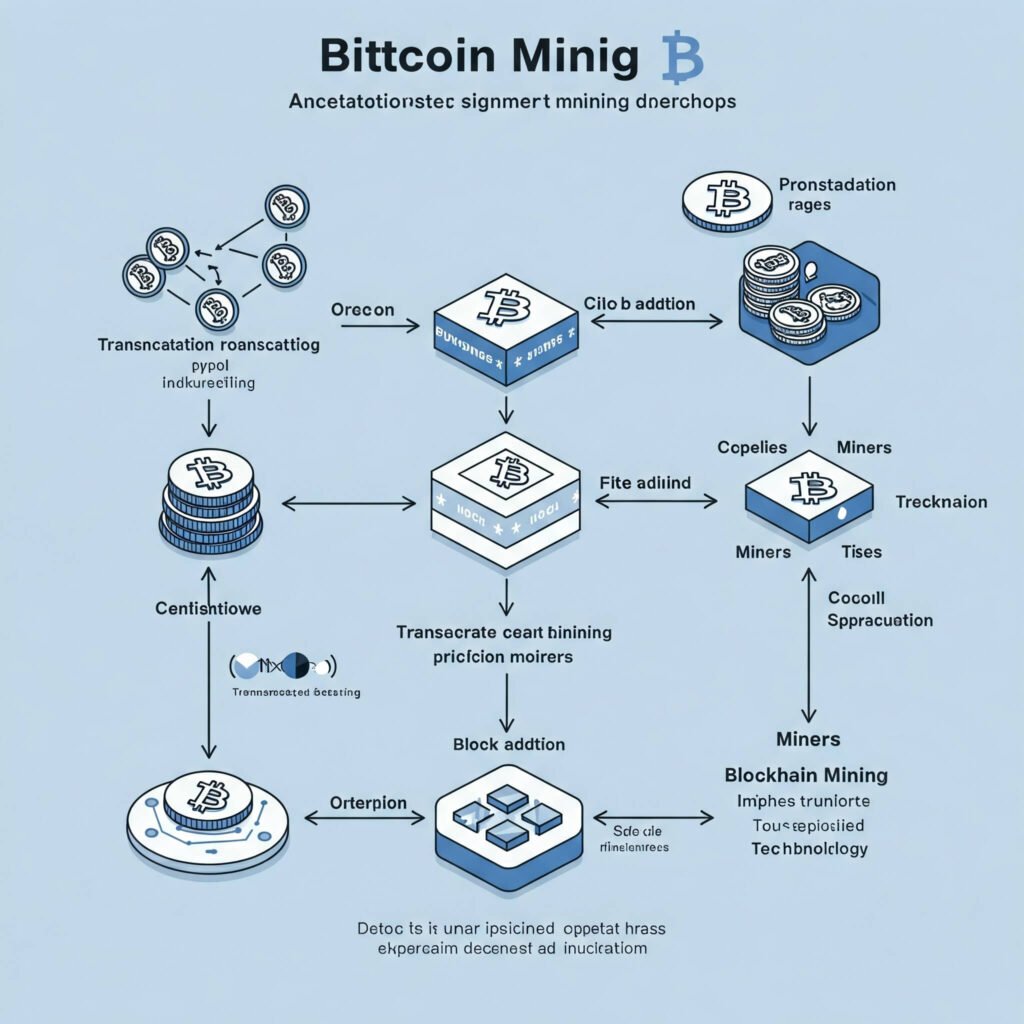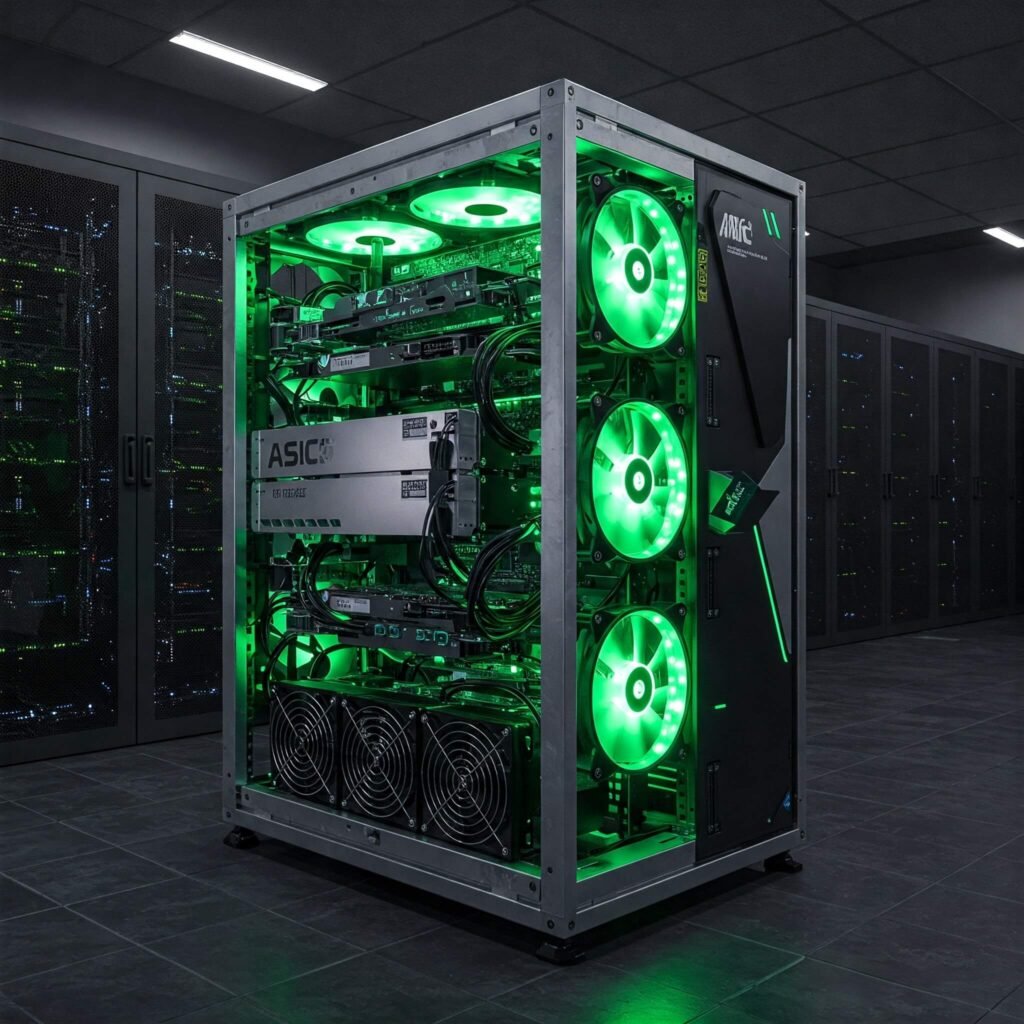Introduction to Bitcoin Mining
Bitcoin mining is the backbone of the Bitcoin network, powering the world’s leading cryptocurrency by securing transactions and creating new coins. Whether you’re a crypto newbie or a tech enthusiast, understanding how Bitcoin mining works is key to unlocking its potential. This guide breaks down the Bitcoin mining process, explains how it rewards miners, and offers actionable steps to help you start mining Bitcoin today.
What Is Bitcoin Mining?
Bitcoin mining is the process of using specialized computers to solve complex mathematical puzzles, validating transactions on the Bitcoin blockchain. Miners are rewarded with newly minted Bitcoins and transaction fees for their efforts. Think of it as a digital gold rush—miners compete to unlock rewards by contributing computational power to the network.
Why Bitcoin Mining Matters
- Security: Mining ensures the Bitcoin network remains secure and tamper-proof.
- Decentralization: Miners worldwide prevent any single entity from controlling the blockchain.
- New Coins: Mining introduces new Bitcoins into circulation, following a predictable schedule.
Learn more about blockchain technology.
How Does Bitcoin Mining Work?
The Bitcoin minings process involves several key steps. Here’s a simplified breakdown:
- Transaction Verification: Miners collect pending Bitcoin transactions from the network.
- Block Creation: These transactions are grouped into a “block.”
- Solving the Puzzle: Miners use powerful computers to solve a cryptographic puzzle, known as Proof of Work (PoW).
- Adding to the Blockchain: The first miner to solve the puzzle adds the block to the blockchain and earns a reward.
- Reward Distribution: As of 2025, the reward is 3.125 Bitcoins per block, plus transaction fees.
This process repeats roughly every 10 minutes, ensuring the network’s stability.

What You Need to Start Bitcoin Mining
Ready to dive into Bitcoin minings? Here’s what you’ll need to get started:
1. Mining Hardware
Bitcoin minings requires specialized equipment called ASIC (Application-Specific Integrated Circuit) miners. These devices are designed solely for mining and offer unmatched efficiency. Popular options include:
- Bitmain Antminer S19 Pro: High performance but costly.
- WhatsMiner M30S++: Budget-friendly with solid output.
Pro Tip: Avoid using regular CPUs or GPUs—they’re too slow for Bitcoin minings in 2025.
2. Mining Software
Once you have hardware, install minings software to connect your rig to the Bitcoin network. Recommended software includes:
- CGMiner: Open-source and highly customizable.
- BFGMiner: User-friendly with advanced features.
3. A Bitcoin Wallet
You’ll need a secure wallet to store your mining rewards. Options include:
- Hardware wallets like Ledger Nano X.
- Software wallets like Electrum.
4. Access to Electricity
Mining is energy-intensive, so affordable electricity is crucial for profitability. Compare local rates and consider renewable energy sources to cut costs.
5. A Mining Pool (Optional)
Solo mining is tough due to high competition. Joining a mining pool lets you combine computing power with others and share rewards. Popular pools include:
- Slush Pool
- F2Pool

Is Bitcoin Mining Profitable in 2025?
Bitcoin minings profitability depends on several factors:
- Bitcoin Price: Higher prices increase potential rewards.
- Electricity Costs: Lower costs boost your margins.
- Hardware Efficiency: Newer ASIC miners consume less power.
- Network Difficulty: As more miners join, puzzles get harder, reducing individual rewards.
Example: In 2025, if Bitcoin is valued at $80,000, minings one block (3.125 BTC) could yield $250,000, minus electricity and hardware costs. Use tools like WhatToMine to calculate profitability.
Actionable Tip: Start small, track expenses, and scale up as you gain experience.
How to Start Bitcoin Mining: Step-by-Step
Follow these steps to launch your Bitcoin minings journey:
- Research Hardware: Invest in an ASIC miner suited to your budget.
- Set Up a Wallet: Secure your earnings with a trusted Bitcoin wallet.
- Choose a Mining Pool: Join a pool to increase your chances of earning rewards.
- Install Software: Configure your mining software to connect to the pool or network.
- Monitor Performance: Use dashboards to track your rig’s efficiency and earnings.
Real-World Example: Sarah, a small-scale miner in Texas, started with one Antminer S19 and joined F2Pool. After six months, she earned $5,000 in Bitcoin, covering her initial costs.

Challenges and Risks of Bitcoin Mining
While rewarding, Bitcoin minings comes with challenges:
- High Upfront Costs: ASIC miners can cost $2,000–$10,000.
- Energy Consumption: Mining rigs run 24/7, driving up electricity bills.
- Market Volatility: Bitcoin’s price fluctuations affect profitability.
- Regulatory Risks: Some countries restrict or ban mining due to energy concerns.
Takeaway: Weigh the risks and start with a clear budget to avoid surprises.
The Future of Bitcoin Mining
Bitcoin minings is evolving as technology and regulations shift. Trends to watch include:
- Sustainable Mining: Miners are adopting solar and wind energy to reduce costs and environmental impact.
- Halving Events: The next Bitcoin halving in 2028 will reduce block rewards to 1.5625 BTC, potentially increasing competition.
- Cloud Mining: Services like Genesis Mining let you rent mining power without owning hardware.
Stay informed to adapt to these changes and maximize your mining success.
Conclusion: Start Your Bitcoin Mining Journey
Bitcoin minings is a fascinating blend of technology, finance, and strategy. By understanding the Bitcoin minings process and investing in the right tools, you can join the global network of miners securing the blockchain and earning rewards. Start small, stay informed, and scale up as you gain confidence. Ready to mine your first Bitcoin? The digital gold rush awaits!
Next Steps: Research ASIC miners, join a mining pool, and calculate your potential profits today.
Outbound Links: “Bitcoin Mining: Complete Guide for Beginners”



